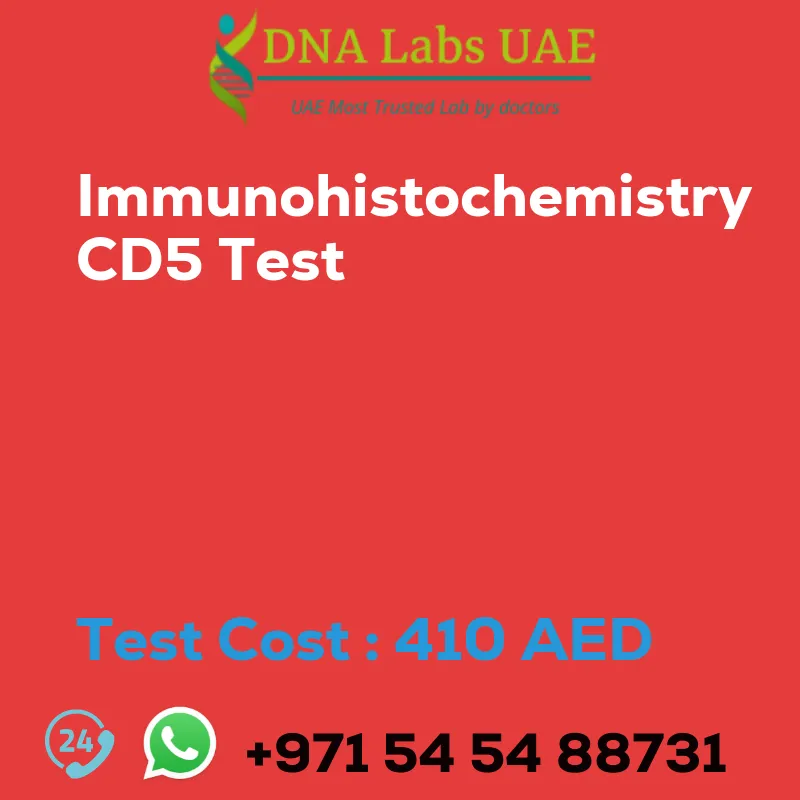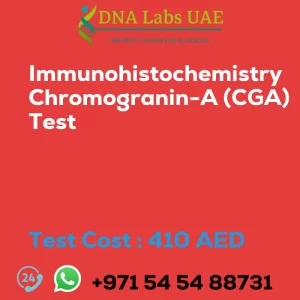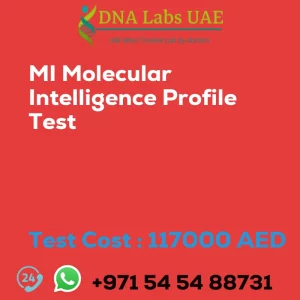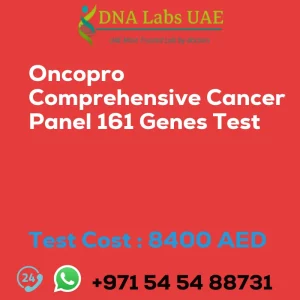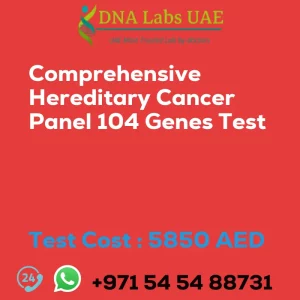IMMUNOHISTOCHEMISTRY CD5 Test
Test Name: IMMUNOHISTOCHEMISTRY CD5 Test
Components: CD5 protein marker
Price: 410.0 AED
Sample Condition: Submit tumor tissue in 10% Formal-saline OR Formalin fixed paraffin embedded block. Ship at room temperature. Provide a copy of the Histopathology report. Indicate site of biopsy and provide Clinical history.
Report Delivery: Sample Daily by 6 pm; Report Block: 5 days, Tissue Biopsy: 5 days, Tissue large complex: 7 days
Method: Immunohistochemistry
Test Type: Cancer
Doctor: Oncologist, Pathologist
Test Department: DNA Labs UAE
Pre Test Information: Provide a copy of the Histopathology report. Indicate site of biopsy and provide Clinical history.
Test Details
CD5 is a protein marker that is commonly used in immunohistochemistry to identify T cells and B-1 cells. CD5 is expressed on the surface of mature T cells, as well as a subset of B cells known as B-1 cells.
To perform an immunohistochemistry CD5 test, the following steps are typically followed:
- Tissue Preparation: The tissue sample, usually obtained from a biopsy or surgical resection, is fixed in formalin and embedded in paraffin wax. The tissue is then cut into thin sections (4-5 micrometers) using a microtome.
- Deparaffinization and Rehydration: The paraffin wax is removed from the tissue sections by immersing them in xylene or a xylene substitute. The sections are then rehydrated by passing them through a series of graded alcohols (e.g., 100%, 95%, 70% ethanol).
- Antigen Retrieval: To enhance the accessibility of the CD5 antigen for antibody binding, antigen retrieval is performed. This is typically achieved by heat-induced epitope retrieval (HIER) using a citrate buffer or EDTA buffer. The tissue sections are heated in the retrieval buffer using a microwave or pressure cooker.
- Blocking: Non-specific binding sites on the tissue sections are blocked using a blocking solution, such as normal serum or bovine serum albumin (BSA). This helps to reduce background staining.
- Primary Antibody Incubation: The tissue sections are incubated with a primary antibody specific to CD5. The primary antibody is typically a monoclonal antibody that recognizes the CD5 antigen on T cells and B-1 cells. The sections are incubated overnight at 4C or for a shorter period at room temperature.
- Secondary Antibody Incubation: After washing away unbound primary antibody, the tissue sections are incubated with a secondary antibody conjugated to a detection system. This secondary antibody recognizes the primary antibody and amplifies the signal. The detection system can be visualized using various methods, such as enzyme-linked immunosorbent assay (ELISA), immunofluorescence, or chromogenic detection.
- Visualization: The CD5 antigen is visualized by adding a chromogenic substrate or a fluorescent dye, depending on the detection system used. For chromogenic detection, a substrate such as diaminobenzidine (DAB) is added, which produces a brown color at the site of CD5 expression. For immunofluorescence, a fluorophore-conjugated secondary antibody is used, which emits fluorescence when excited by a specific wavelength of light.
- Counterstaining and Mounting: To enhance the contrast and visualization of the tissue sections, a counterstain, such as hematoxylin, may be applied. The stained tissue sections are then dehydrated, cleared, and mounted on glass slides using a mounting medium.
- Analysis: The stained tissue sections are examined under a microscope to evaluate the presence and distribution of CD5-positive cells. The intensity and pattern of staining can provide valuable information about the cellular composition and localization of CD5-expressing cells in the tissue sample.
Overall, the immunohistochemistry CD5 test is a valuable tool for studying the presence and distribution of CD5-positive cells, particularly T cells and B-1 cells, in tissue samples. It is commonly used in research and diagnostic settings to aid in the diagnosis and classification of various diseases, such as lymphomas and autoimmune disorders.
| Test Name | IMMUNOHISTOCHEMISTRY CD5 Test |
|---|---|
| Components | |
| Price | 410.0 AED |
| Sample Condition | Submit tumor tissue in 10% Formal-saline OR Formalin fixed paraffin embedded block. Ship at room temperature. Provide a copy of the Histopathology report. Indicate site of biopsy and provide Clinical history. |
| Report Delivery | Sample Daily by 6 pm; Report Block: 5 days Tissue Biopsy: 5 days Tissue large complex : 7 days |
| Method | Immunohistochemistry |
| Test type | Cancer |
| Doctor | Oncologist, Pathologist |
| Test Department: | |
| Pre Test Information | Provide a copy of the Histopathology report. Indicate site of biopsy and provide Clinical history. |
| Test Details |
CD5 is a protein marker that is commonly used in immunohistochemistry to identify T cells and B-1 cells. CD5 is expressed on the surface of mature T cells, as well as a subset of B cells known as B-1 cells. To perform an immunohistochemistry CD5 test, the following steps are typically followed: 1. Tissue Preparation: The tissue sample, usually obtained from a biopsy or surgical resection, is fixed in formalin and embedded in paraffin wax. The tissue is then cut into thin sections (4-5 micrometers) using a microtome. 2. Deparaffinization and Rehydration: The paraffin wax is removed from the tissue sections by immersing them in xylene or a xylene substitute. The sections are then rehydrated by passing them through a series of graded alcohols (e.g., 100%, 95%, 70% ethanol). 3. Antigen Retrieval: To enhance the accessibility of the CD5 antigen for antibody binding, antigen retrieval is performed. This is typically achieved by heat-induced epitope retrieval (HIER) using a citrate buffer or EDTA buffer. The tissue sections are heated in the retrieval buffer using a microwave or pressure cooker. 4. Blocking: Non-specific binding sites on the tissue sections are blocked using a blocking solution, such as normal serum or bovine serum albumin (BSA). This helps to reduce background staining. 5. Primary Antibody Incubation: The tissue sections are incubated with a primary antibody specific to CD5. The primary antibody is typically a monoclonal antibody that recognizes the CD5 antigen on T cells and B-1 cells. The sections are incubated overnight at 4C or for a shorter period at room temperature. 6. Secondary Antibody Incubation: After washing away unbound primary antibody, the tissue sections are incubated with a secondary antibody conjugated to a detection system. This secondary antibody recognizes the primary antibody and amplifies the signal. The detection system can be visualized using various methods, such as enzyme-linked immunosorbent assay (ELISA), immunofluorescence, or chromogenic detection. 7. Visualization: The CD5 antigen is visualized by adding a chromogenic substrate or a fluorescent dye, depending on the detection system used. For chromogenic detection, a substrate such as diaminobenzidine (DAB) is added, which produces a brown color at the site of CD5 expression. For immunofluorescence, a fluorophore-conjugated secondary antibody is used, which emits fluorescence when excited by a specific wavelength of light. 8. Counterstaining and Mounting: To enhance the contrast and visualization of the tissue sections, a counterstain, such as hematoxylin, may be applied. The stained tissue sections are then dehydrated, cleared, and mounted on glass slides using a mounting medium. 9. Analysis: The stained tissue sections are examined under a microscope to evaluate the presence and distribution of CD5-positive cells. The intensity and pattern of staining can provide valuable information about the cellular composition and localization of CD5-expressing cells in the tissue sample. Overall, the immunohistochemistry CD5 test is a valuable tool for studying the presence and distribution of CD5-positive cells, particularly T cells and B-1 cells, in tissue samples. It is commonly used in research and diagnostic settings to aid in the diagnosis and classification of various diseases, such as lymphomas and autoimmune disorders. |

